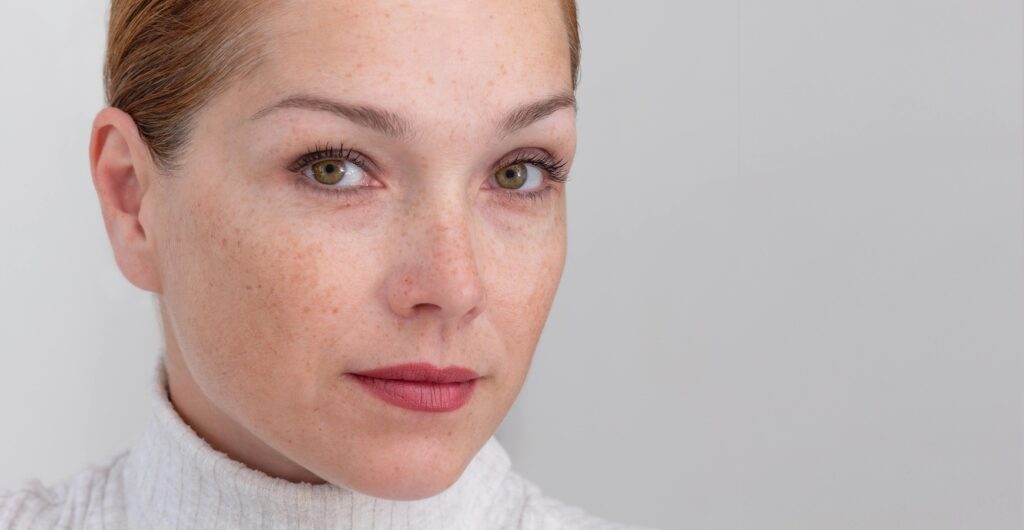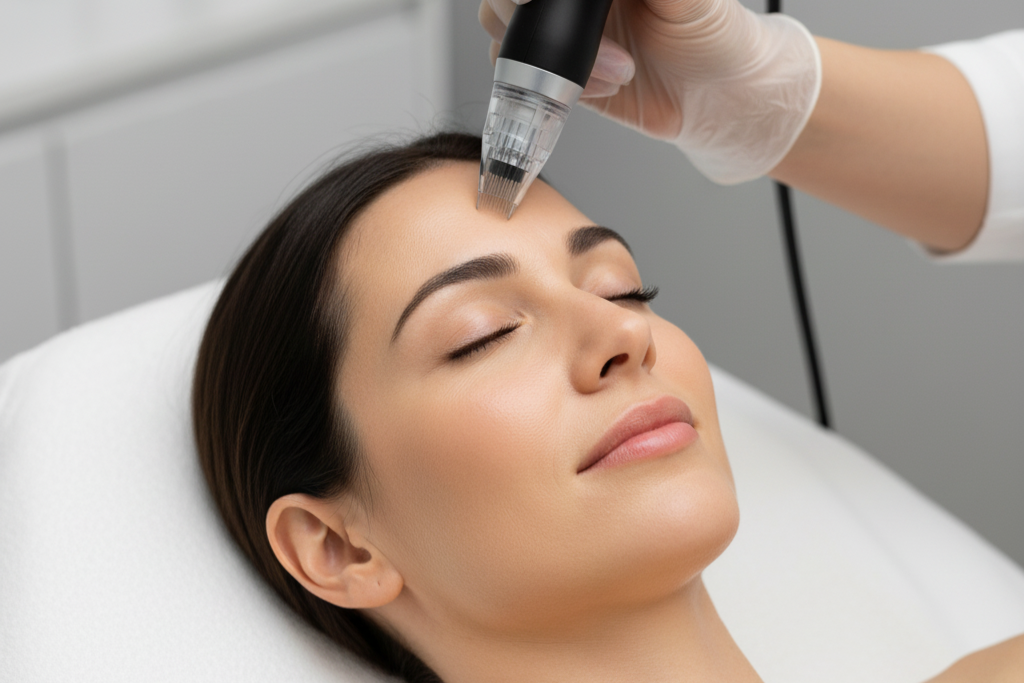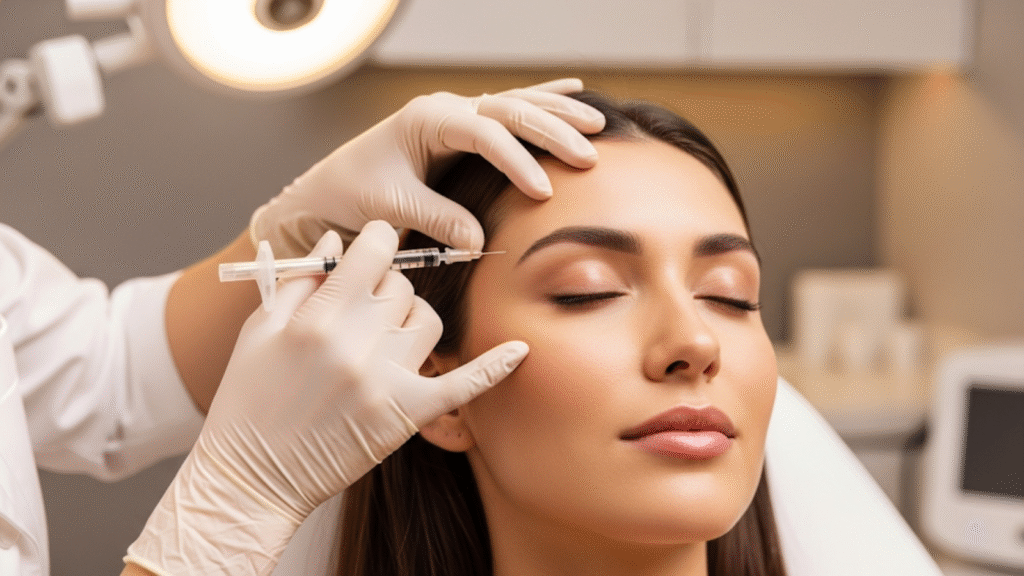Pigment and brown spots, often considered a sign of aging or skin damage, are common dermatological concerns for many individuals. These spots can vary in size, color, and location, affecting both the appearance and, sometimes, the health of the skin. Let’s review the causes, symptoms, and diagnosis of pigment and brown spots, offering insights into this widespread skin condition.
What are Pigment and Brown Spots?
Pigment and brown spots, also known as hyperpigmentation, are areas of the skin that become darker than the surrounding skin. The pigment called melanin, which determines skin tone, is produced in excess, which results in this darkening. Common types include age spots, liver spots, sunspots, and freckles.
Types of Pigment Spots
Pigment spots on the skin, characterized by areas of increased pigmentation, come in various forms. Each type has unique characteristics and causes. Here are some of the common types of pigment spots:
- Age Spots (Liver Spots or Solar Lentigines): Usually found on skin exposed to the sun, such as the face, hands, and arms, they are tiny, darkened patches. They are common in older adults, hence the name “age spots,” and are a result of prolonged sun exposure.
- Melasma (Chloasma): Melasma is characterized by larger patches of darkened skin, often appearing on the face. It’s particularly common in women, especially during pregnancy (often referred to as the “mask of pregnancy”) or among those using hormonal contraception. Sun exposure can also exacerbate this condition.
- Freckles (Ephelides): Small, flat, brown spots that typically appear on the face, arms, and upper body. Freckles are commonly found in people with fair skin and are generally genetic. Sun exposure might make them stand out more.
- Post-Inflammatory Hyperpigmentation (PIH): This occurs when a skin injury or inflammation (like acne, eczema, or a bug bite) heals and leaves a flat area of discoloration behind. It is more common in those with darker skin tones and can be pink, red, brown, or black in color, depending on the level of skin tone deterioration.
- Solar Purpura: These are purple or dark spots that appear on the skin due to thinning of the skin layers and blood vessel walls, typically in older adults. They are often found on the arms and hands.
Each type of pigment spot has distinct triggers and may require different approaches for treatment and management. Understanding the type of pigment spot is crucial for effective skincare and treatment strategies.
Causes of Pigment and Brown Spots
Pigment and brown spots, also known as hyperpigmentation, can develop due to various factors. Here are some of the primary causes:
- Sun Exposure: Prolonged or intense exposure to the sun’s ultraviolet (UV) rays stimulates melanocytes, the cells responsible for producing melanin (skin pigment), leading to increased melanin production and the formation of spots.
- Aging: As the skin ages, melanin can become more concentrated in certain areas, leading to age spots, especially in sun-exposed areas.
- Hormonal Changes: Hormonal changes may trigger melasma, a type of hyperpigmentation that results in dark areas, usually on the face. These variations can occur during pregnancy, menopause, or as a result of birth control medications.
- Genetic Factors: A person’s genetic makeup can significantly influence their likelihood of developing pigment spots.
- Skin Inflammation or Injury: Post-inflammatory hyperpigmentation (PIH) occurs when a wound or irritation to the skin, such as from acne, eczema, or other skin conditions, leads to increased melanin production in the healing process.
- Medications: Certain medications, including chemotherapy drugs, antibiotics, antimalarial drugs, and antiseizure drugs, can cause hyperpigmentation as a side effect.
- Medical Conditions: Some health conditions, such as liver disease, can cause pigmentation changes in the skin.
- Environmental Factors: Pollution and other environmental stressors can contribute to the development of pigment spots.
Understanding pigment and brown spots causes is crucial for treatment and prevention. Lifestyle changes, medical treatments, and cosmetic procedures can help manage and reduce appearance.
Symptoms
The symptoms of pigment and brown spots, or hyperpigmentation, are primarily visual and can vary depending on the type and cause of the hyperpigmentation. Here are some common symptoms associated with these skin conditions:
- Visible Discoloration: The most evident sign is the appearance of darker spots or patches on the skin than the surrounding area. These can range in color from light brown to black.
- Varied Shapes and Sizes: Pigment spots can vary significantly in shape and size. They may appear as small, freckle-like spots or larger patches of discoloration.
- Common Areas of Appearance: These spots typically develop in areas frequently exposed to the sun, such as the face, hands, shoulders, arms, and back. However, they can also appear in other areas, particularly in cases related to hormonal changes or skin inflammation.
- Changes Over Time: Some spots may gradually increase in size or darken over time, especially with continued sun exposure or ongoing skin inflammation.
- Generally Asymptomatic: Pigment and brown spots are usually painless and don’t cause physical discomfort. However, their appearance can be a cosmetic concern for many people.
- Texture: In most cases, these spots don’t affect the skin’s texture, though in some types of hyperpigmentation, the skin may feel slightly raised or rough.
Regular skin examinations and consultation with a dermatologist are crucial for managing and treating pigment and brown spots, as they can indicate more serious skin conditions, including skin cancer.
Diagnosis
Diagnosing pigment and brown spots is primarily a visual process, typically conducted by a dermatologist or skin care specialist. Here’s how the diagnosis is usually carried out:
- Visual Examination: The first step involves a thorough examination of the affected skin areas. The doctor looks at the size, shape, color, and distribution of the spots to identify the type of hyperpigmentation.
- Medical History: Understanding the patient’s medical history, including any known skin conditions, sun exposure habits, medication use, and family history of skin disorders, is crucial in diagnosing the cause of pigment spots.
- Dermoscopy: A dermoscope, a specialized instrument that provides a magnified view of the skin, may be used for a more detailed examination of the spots. This can help differentiate benign spots from potentially malignant ones.
- Wood’s Lamp Examination: In some cases, a Wood’s lamp (a hand-held ultraviolet light) is used to examine the skin in a darker room. This can help in assessing the depth of the pigment and identifying various types of pigmentation disorders.
- Biopsy: If there’s a concern about skin cancer or another serious skin condition, the dermatologist might perform a skin biopsy. A tiny skin sample is taken out, and its pigmentation is analyzed under a microscope to ascertain its type.
- Photography: Serial photography may be used to monitor changes in the spots over time, especially if there is a risk of skin cancer.
A dermatologist diagnoses pigment and brown spots, recommending treatment plans. Seeking professional evaluation is crucial for identifying serious conditions and discussing potential treatments.
When to See a Doctor
Consulting a dermatologist is crucial if you notice significant changes in pigment or brown spots, such as rapid changes in size, shape, color, irregular borders, or multiple colors. Spots larger than a pencil eraser, particularly if growing, or accompanied by itching, bleeding, crusting, or tenderness, should be examined, especially for those with a personal or family history of skin cancer.
If over-the-counter treatments prove ineffective, or if the appearance of these spots affects your self-esteem, a professional can provide effective treatment options. Prompt medical advice is crucial for managing skin conditions, as early detection and treatment are essential for effective management.
Conclusion
While pigment and brown spots are usually harmless and more of a cosmetic concern, understanding their causes and symptoms is crucial for effective management. At Avail Aesthetics, we specialize in advanced laser treatments, expertly targeting and effectively eliminating pigment and brown spots to reveal the clear, radiant complexion you desire. Our commitment to precision and excellence ensures you receive the best care for a flawless skin transformation.









